You can contact LEARNZ, part of CORE Education, at:
Postal Address:
PO Box 13 678,
Christchurch 8141,
New Zealand
Kia ora koutou,
Estuaries are important marine ecosystems that are often under-valued. You may have looked out over a mud flat where land meets sea and thought that not much lives here, but estuaries are full of life. You spent the day uncovering the secret wonders of a Nelson estuary.
The value of estuaries
Life on an estuary is ruled by the tide. You had to be up early to make it to Nelson Haven at low tide. Even at low tide, pools of water remained, and I was regretting my choice of footwear. I should have worn gumboots! You met scientists Josie and Rebecca who guided you on your estuary exploration. Rebecca is from the University of Waikato and she talked to you about the values of estuaries. Estuaries are home to many different shellfish, invertebrates and birds. Estuaries also provide feeding and breeding grounds for many animals. People also need estuaries. Estuaries like wetlands filter water and reduce flood risk. They are also a fantastic place for activities like kayaking, paddle boarding, nature watching and collecting kai moana. You can watch the video to learn more about the value of estuaries.
Delving deeper
It’s impossible to fully appreciate what lives in an estuary without getting your hands dirty. Josie from the University of Otago took you out across the estuary to find some cockles. At first glance it looked like not much could survive in the squishy sediment, but as soon as you dug below the sand you found shellfish and crabs. Josie talked about the vital role of bivalves such as cockles in estuaries. Cockles are filter feeders and get their food by pumping water across their bodies and sieving out tiny bits of food. It was incredible to think about how much water these tiny shellfish can filter. Without filter feeders water can get murky and this can then lead to low oxygen levels, as plants don’t get enough light to photosynthesise and the whole estuary suffers. Watch the video about ecosystem services to find out more.
Science in action
Knowing what an important job cockles have, you completed a monitoring activity to see what habitat they prefer and what can affect their numbers. Brooklyn School from Motueka came to lend a hand. Brooklyn School have been studying their marine environment and looking at the impacts people have on it. Students were keen to meet Rebecca and Josie and help with the project. It was brilliant to see how interested these students were. Not even the rain could dampen their enthusiasm. Josie had brought quarter metre square quadrats, pipes for collecting cores, sieves and callipers. Students had to collect core samples from within their quadrats, sieve away the sediment and count the number of live cockles they found. Then they had to measure the cockles with callipers. Before long everyone was wet and dirty but loving getting out and about in such a fascinating place. You can see this in the video.
Comparing results
As the tide came in, the work got harder but the students managed to collect samples in two different sites and compare results. They discovered that cockles like to live together in big groups and prefer sandy sediment rather than muddy sediment. Josie had a fancy piece of equipment which was able to measure the amount of oxygen in the sediment. The sandy site had more oxygen in it than the muddy site. Estuaries can get smothered in mud when soil runs off the land. We can reduce sediment runoff by planting trees which will help keep our estuaries healthy.
Too much of a good thing
Nutrient runoff can also harm estuaries. Nutrients are needed for plant growth but too much of a good thing can cause problems. Nutrients are often added to farmland to make more grass grow. If these nutrients are not all used up by the grass then the extra nutrients end up flowing into rivers, estuaries and the sea. When too many nutrients enter the water, algal blooms can grow. These blooms use up lots of oxygen in the water and then die leaving an unhealthy waterway. Nutrient and sediment runoff are big threats to our marine environment. You can find out more about this in the video.
To end the day, you headed out to Cawthron’s Aquaculture Park to escape the rain and complete the web conference. Rebecca and Josie answered questions from Red Beach School and Brooklyn School. They enjoyed describing some of the ways we can work together to help look after marine areas. You can listen to the recording of this web conference to find out more.
Tomorrow you will head back out on a NIWA research boat to see some more science in action.
See you in the morning,
Shelley, the LEARNZ field trip teacher.
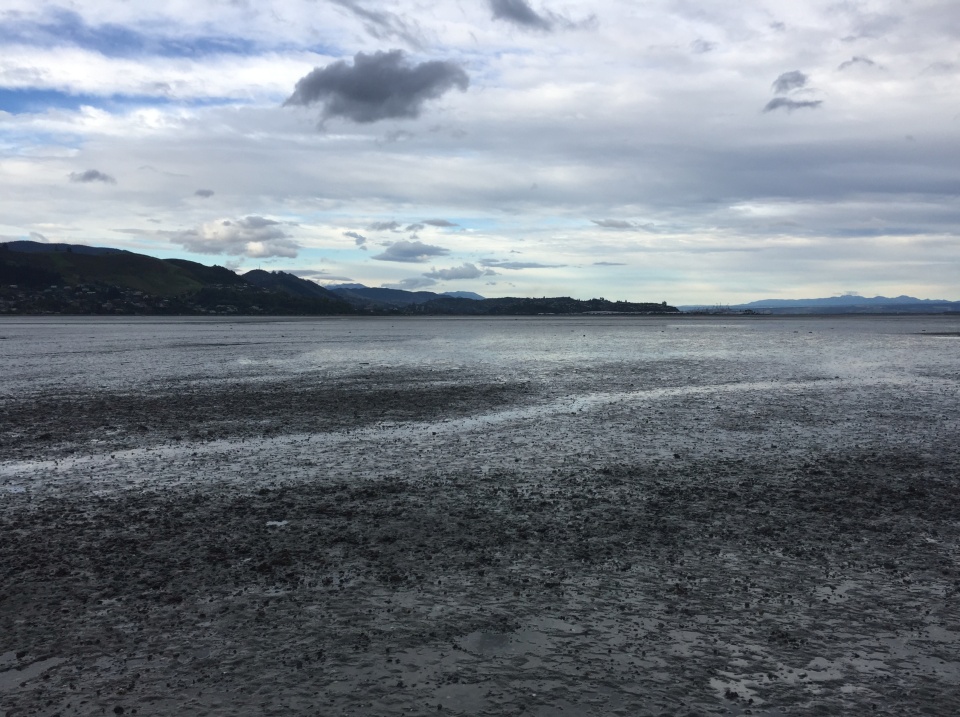
You had to be up early to make it to the estuary at low tide this morning. Image: LEARNZ.
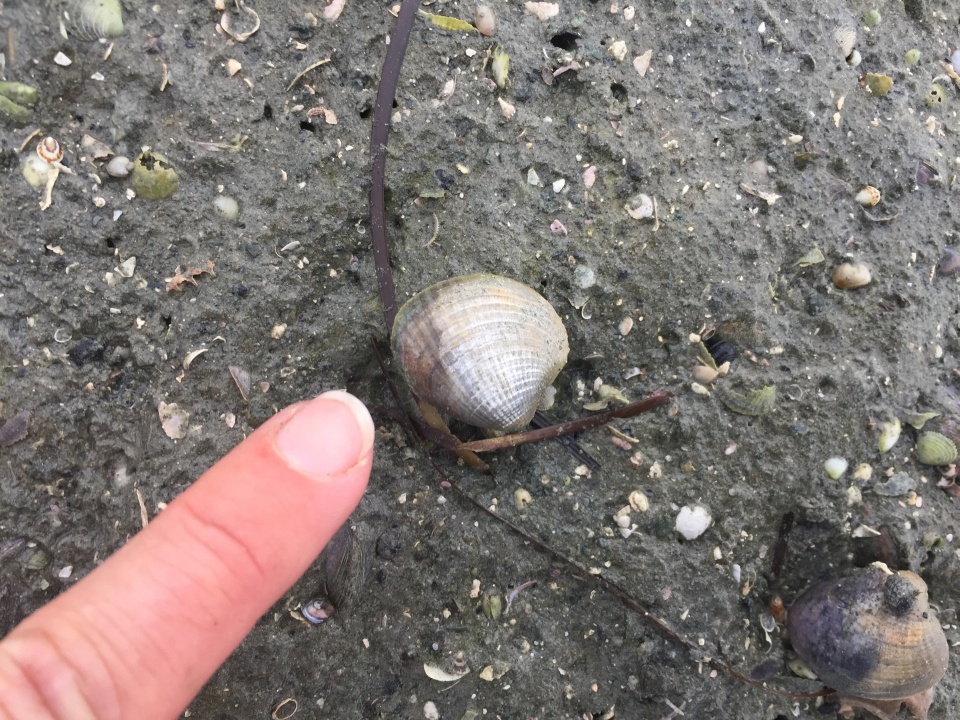
Cockles are filter feeders that perform an important job in estuaries. What job is this? Image: LEARNZ.
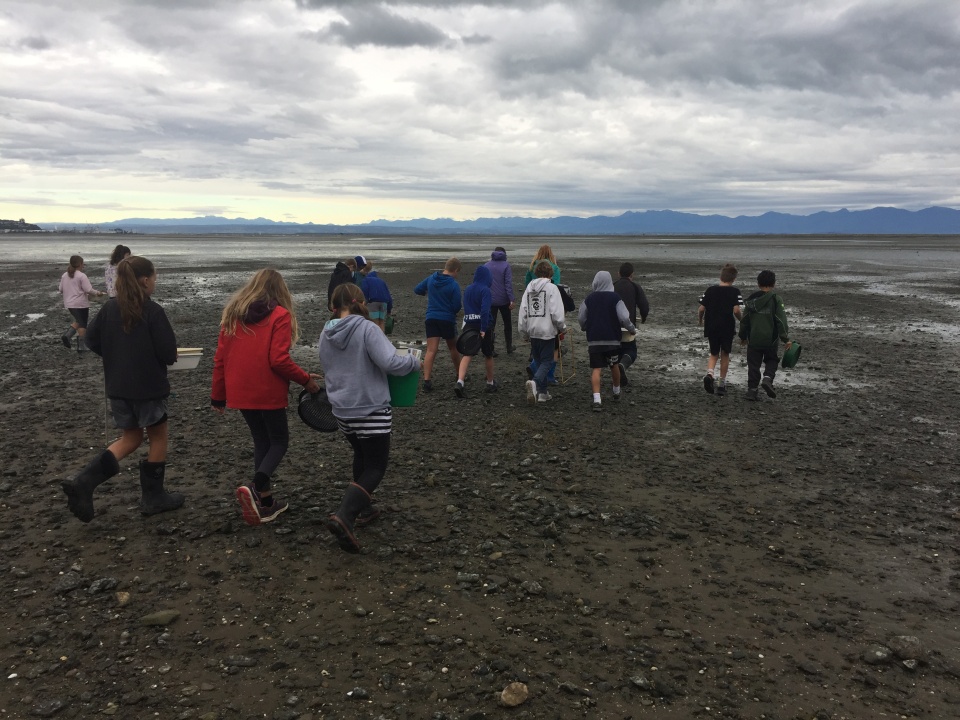
Students from Brooklyn School head out across the estuary to collect samples. Image: LEARNZ.
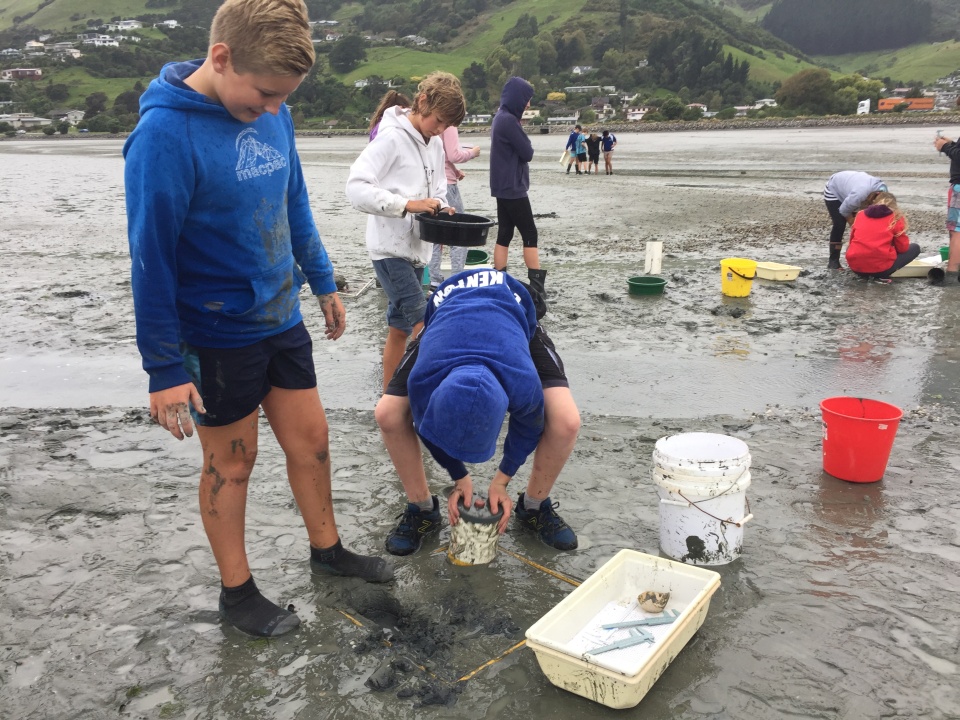
A core sample is being collected from within a quarter metre square quadrat to see what lives in the sediment. Image: LEARNZ.
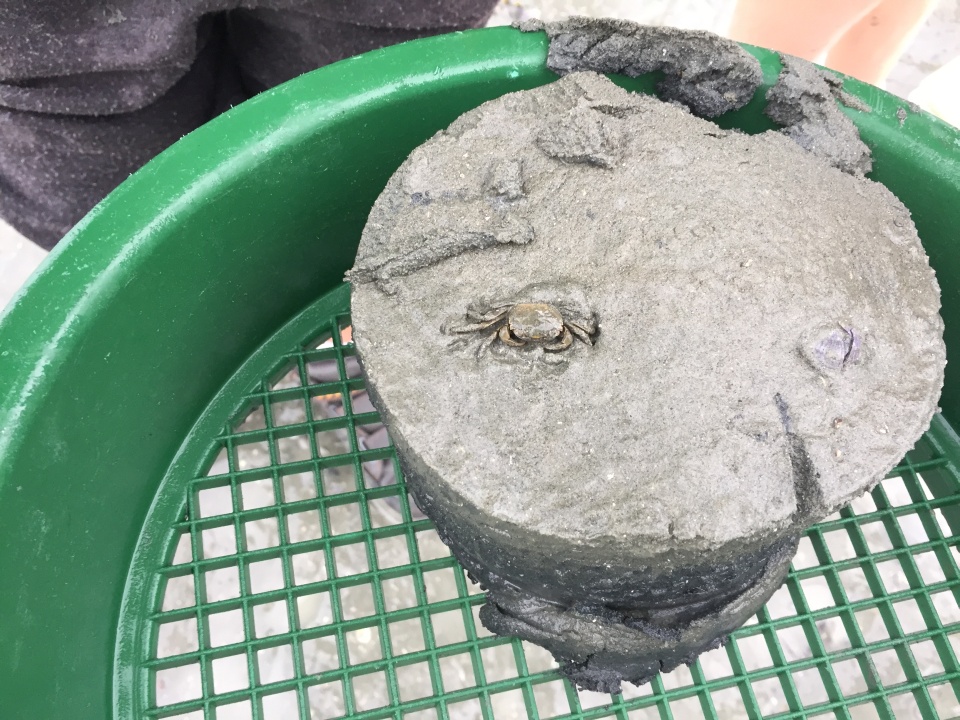
A mud crab sits on the top of a core sample. This sample will be sieved to see what else lives within this sediment. Image: LEARNZ.
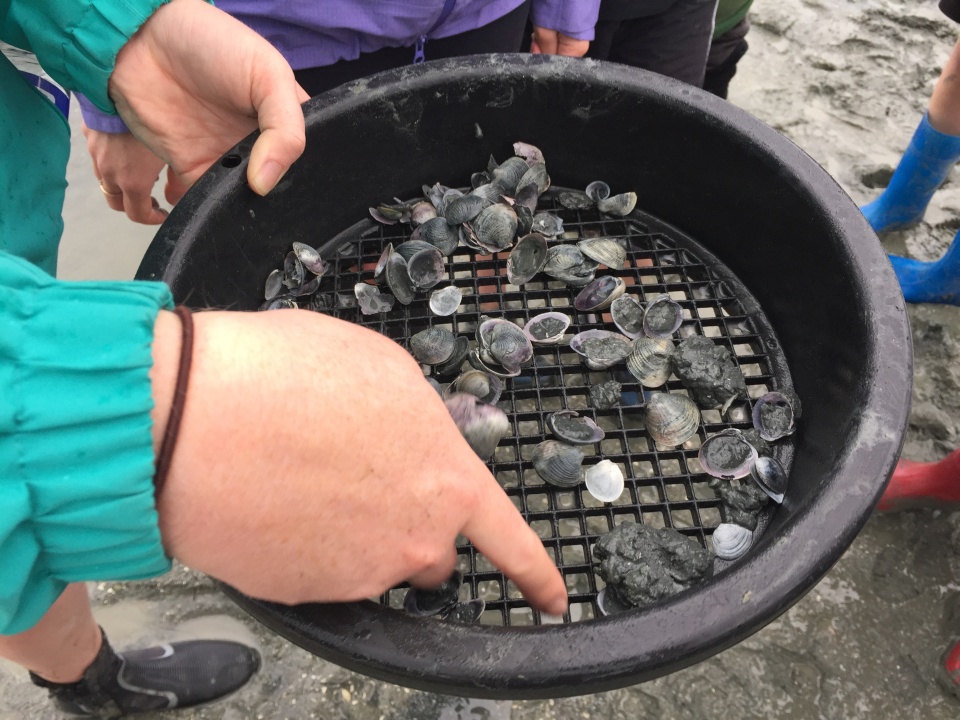
Students count the number of live cockles they find in each core sample. Image: LEARNZ.
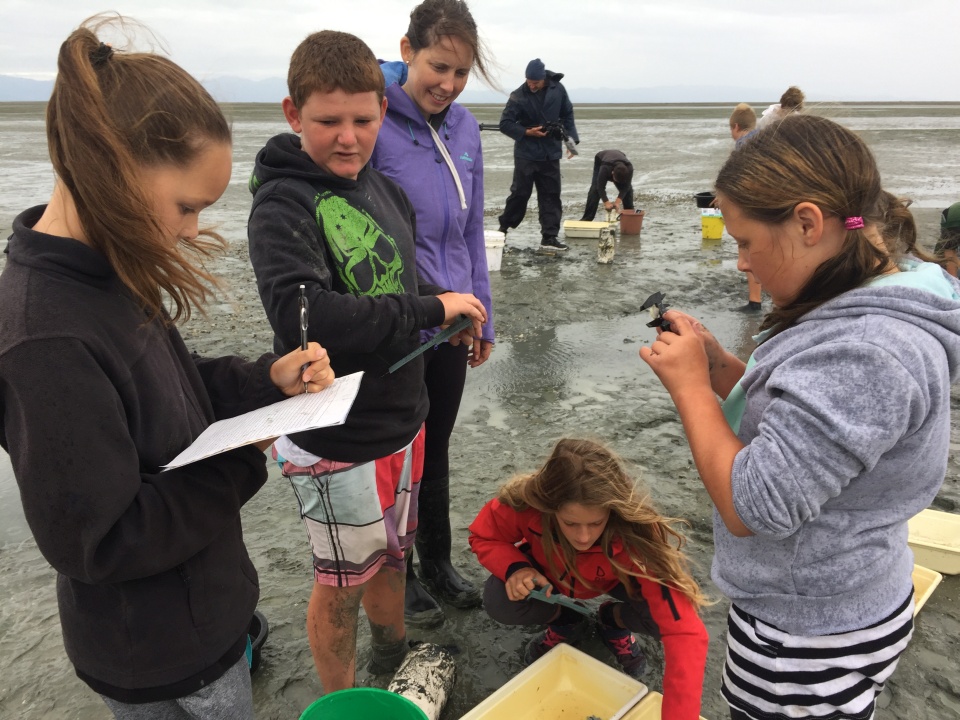
Students measure the size of each cockle and record their results. What did these students learn about where cockles live? Image: LEARNZ.
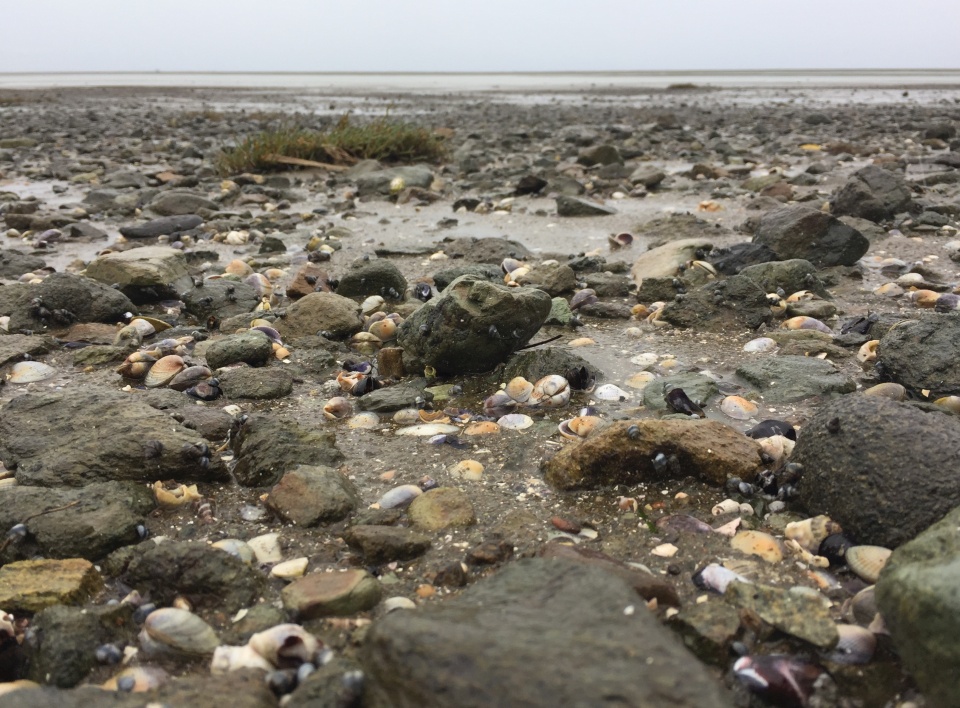
Estuaries are home to many different animals. How many different species can you see in this photo? Image: LEARNZ.
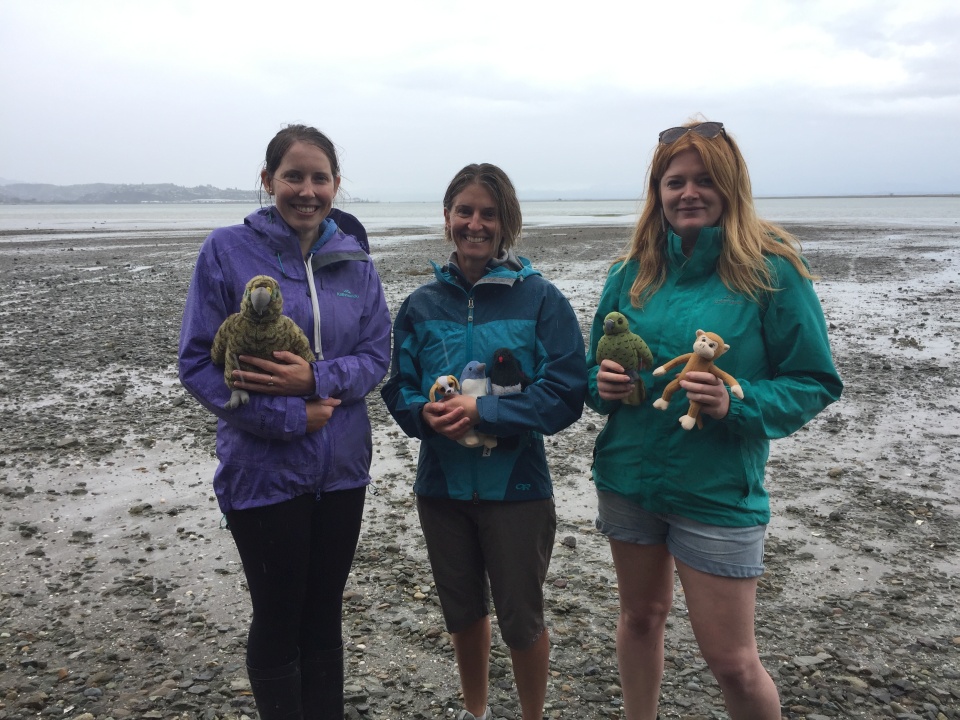
Rebecca, Shelley, Josie and the ambassadors are all smiles after their estuary exploration. Image: LEARNZ.
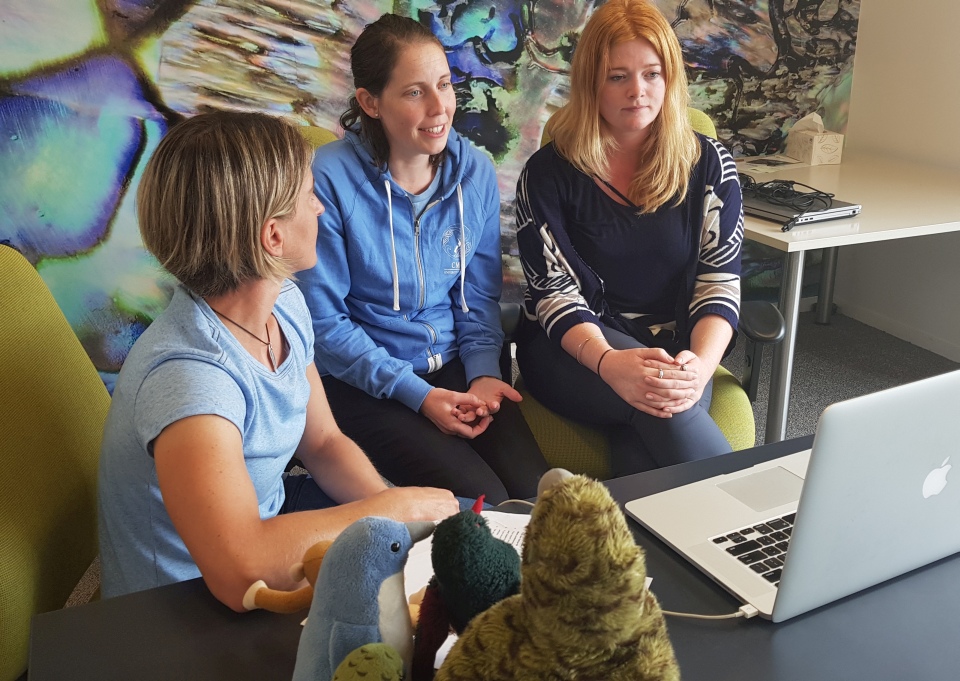
Shelley, Rebecca and Josie talk to Red Beach School and Brooklyn School during the web conference. Image: LEARNZ.